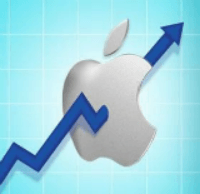The From Line
Trend: Designing for the tablet experience: Marketers will need to brand for optimization within the tablet interface.
 iPad passes Mac computer in sales. The tablet is the new frontier.
iPad passes Mac computer in sales. The tablet is the new frontier.
It’s official. Consumers are tablet crazy; so much so that they are choosing the mobile devices over computers. It’s that time again marketers, just when you’ve finally optimized for mobile…
A look into Apples record breaking year provides an impressive example of the tablets’ rapid rise in popularity. In 2011, the company sold over 156 million iOS devices (iPhone, iPad, and iPod Touch), 55 million of which were iPads. To put this in perspective, in just one year combined sales of these mobile devices have exceeded the 122 million Mac computers ever sold. Since it was first available for pre-order in March of 2010, the sales trend of the iPad has blown all other Apple products out of the water (see figure below). CEO Tim Cook commented “This 55 is something no one would have guessed. Including us. To put it in context, it took us 22 years to sell 55 million Macs. It took us about 5 years to sell 22 million iPods, and it took us about 3 years to sell that many iPhones. And so, this thing is, as you said, it’s on a trajectory that’s off the charts.” There has been buzz for some time of the possible upcoming announcement of the iPad3, and today we have verification via Mashable that Apple has sent out invitations for an event on March 7th. The invitation states simply “We have something you really need to see. And touch” and according to Mashable is "superimposed on what is almost certainly an iPad". Knowing this, it is more crucial than ever for marketers to take to heart the magnitude of this trend. It has been rumored that the newest generation iPad will have a full operating system, providing the user with a full blown hand held computer, and conceivably further intensifying this trend. Yes, Apple is just one example, but I think it’s safe to say they are usually ahead of the trend. Assessing how we communicate via tablet will be paramount.

Takeaway: It’s tablet time! Is your message worthy of the tablet experience?
The good news is, if you've already mastered message rendering and optimized your content for the iPhone, then adapting for the iPad and similar devices will be a piece of cake. The most important changes to note are screen size and layout, which I will address a little later. However, if you’ve made the mistake of ignoring the essential mobile market up to now, you’ll have to start from scratch. Either way, (and at the risk of sounding like a broken record), mastering the tablet experience will require lots of testing. Once you have a smart phone strategy in place, you’ll simply build off that to transition to the tablet experience.
How to: Analytics will be your best friend.
The biggest change from the iPhone to iPad isn’t very big at all. For the most part, screen size will be your main worry. The iPad 2 has screen dimensions of 1024px X 768px, close to 59% larger than the iPhone 4s. If your current mobile layout renders well in the iPads larger size, then change isn’t necessarily needed. It is also important to keep in mind that Apple products do not support flash. To keep from losing those users, designers should stick to standards-compliant HTML and CSS as well as HTML5 for multimedia, i.e. video in email as well as online gaming. However, some may choose to dig deeper into their analytics and optimize based on their customers behavioral activity.
Because behavior doesn’t necessarily transcend from desktop to mobile, analyzing how your customers interact with your content will be crucial for optimization. For these purposes, basic Google Analytics will do just fine. The key here will be to carefully monitor mobile device activity. Google’s analytics software can break this down specifically to the device’s brand and model and then provide further data based on content viewed by certain devices. For example, say you have a blog consisting mainly of text as well as a library of demo videos and pdf files. The blog postings, which were previously formatted to render flawlessly on mobile phones, will most likely transition well to the iPad. The videos and pdfs however, may cause an issue. Where a simple list view is acceptable on a desktop, a more visually focused layout of thumbnails may prove more effective for the tablet format. This change would not be warranted without the help of analytics. If your analytics results show a high usage of tablets to view your pdfs and videos, it’s worth the effort to make that experience as enjoyable as possible for your visitors.
The same can be said for emails. Most email marketing plans include a variety of communication categories i.e. newsletters, surveys, product/service updates etc. and will attract a variety of subscribers. These subscribers are not all equal and won’t interact with your messages in the same way. Campaigns which show significant tablet traffic should be optimized for that interface, where those with low tablet interaction won’t need to be altered. Testing and behavioral analysis will pinpoint which campaigns to tailor. Once this is accomplished, marketers will have gained valuable information that they can now use to even further segment their lists and better engage their customers.
When you subscribe to the blog, we will send you an e-mail when there are new updates on the site so you wouldn't miss them.
